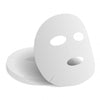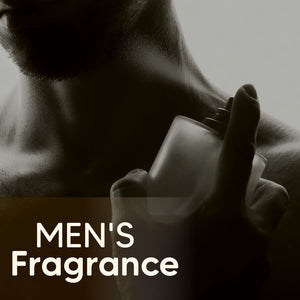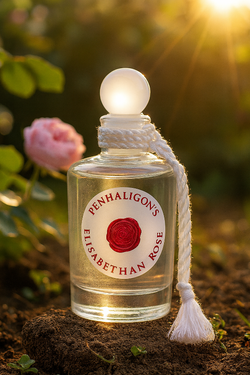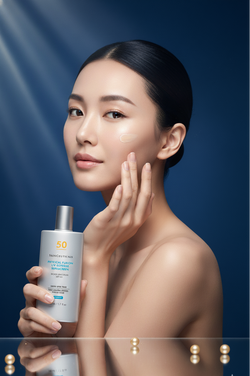[NEW] The Day I Stopped Losing My Hair And What Actually Worked
I still remember the exact moment I realized something was wrong. I was getting ready for a friend’s wedding, trying to style my hair, but no matter what I did, I couldn’t hide the thinning anymore. No matter how I angled the curling iron or where I placed the bobby pins, there it was, my scalp, showing through in a way it never had before. I cried in the bathroom for twenty minutes. Then I wiped my tears, went to the wedding, smiled, and pretended everything was fine. But inside, I was panicking.
That was eight months ago. Today, my hair still isn’t perfect, but it’s growing, actually growing. More importantly, I finally understand what was happening and why everything I tried at first didn’t work. If you’re reading this because you’re worried about your hair, I want to share what I’ve learned, not the clinical version, but the real, messy, trial-and-error journey that actually helped.
Table of Contents
- 1. What Nobody Tells You About Hair Loss
- 2. The Five Things Quietly Destroying Your Scalp
- 2.1. The Invisible Buildup
- 2.2. The Inflammation Spiral
- 2.3. The Circulation Problem
- 2.4. The pH Disaster
- 2.5. The Hormone Sensitivity
- 3. What Actually Started Working
- 3.1. I Changed My Whole Shower Routine
- 3.2. I Started Massaging My Scalp Every Single Day
- 3.3. I Added a Weekly Scalp Reset
- 3.4. I Fixed My Nutrition
- 4. When I Needed More Help
- 5. My Actual Timeline (The Real One)
- 6. If I Could Tell My Six-Months-Ago Self Anything
1. Summary
I spent six months losing hair before I figured out the real problem wasn't my hair at all. It was my scalp. This is everything I learned about why scalp health matters more than any expensive product, and what actually worked for me. The basics that changed everything: switching to lukewarm water, doing 5-minute daily scalp massages, weekly oil treatments, and eating better. When that wasn't quite enough, I added a targeted serum with Aminexil and botanical extracts from KÉRASTASE Genesis Serum Anti-Chute Fortifiant 90ml that strengthened my hair roots. My timeline: less shedding by week 4, baby hairs by week 10, confidence back by month 4. This isn't a sales pitch. It's what I wish someone had told me on day one.
1. What Nobody Tells You About Hair Loss
 Here’s the thing, almost everyone gets wrong, and I did too, for way too long: we treat hair loss like it’s a hair problem. We buy masks, serums, and vitamins, focusing on the strands we see falling out. But the truth is, your hair isn’t the problem; your scalp is. Think of it like growing tomatoes: you don’t nurture the fruit, you take care of the soil. Your scalp is that soil, and everything starts there.
Here’s the thing, almost everyone gets wrong, and I did too, for way too long: we treat hair loss like it’s a hair problem. We buy masks, serums, and vitamins, focusing on the strands we see falling out. But the truth is, your hair isn’t the problem; your scalp is. Think of it like growing tomatoes: you don’t nurture the fruit, you take care of the soil. Your scalp is that soil, and everything starts there.
Research from the International Journal of Trichology helped me understand this clearly. When your scalp is unhealthy, inflamed, clogged, or undernourished, your follicles shut down early, ending the growth phase too soon and jumping straight to shedding. That’s why your hair falls out. What really shocked me was learning that scalp aging actually happens faster than facial aging. A 2019 study in the Journal of Clinical and Aesthetic Dermatology found that after 30, our scalps lose elasticity, blood flow, and collagen quickly than our faces. As a result, cell turnover slows, circulation weakens, and the scalp becomes less able to hold onto hair.
It finally made sense why my old haircare habits weren’t working anymore. My scalp had changed, I just hadn’t noticed until my hair started falling out.
2. The Five Things Quietly Destroying Your Scalp
Let me walk you through what was actually happening on my scalp, even though I couldn't see it.
2.1. The Invisible Buildup
Every day, your scalp sheds dead skin cells and produces natural oils. Add in pollution, styling products, even just dust from the air, and you get this layer of buildup. Sometimes you can see it as flakes. Sometimes it's invisible. Either way, it's sitting there suffocating your hair follicles.
I didn't realize how bad mine was until I started the detox routine I'll tell you about later. The amount of stuff that came off my scalp was honestly gross. But that buildup was literally preventing my follicles from doing their job.
2.2. The Inflammation Spiral
My scalp was inflamed for months before I connected it to my hair loss. It wasn't dramatically red or painful. Just slightly itchy sometimes. A bit sensitive. Easy to ignore.
But that low-level inflammation was telling my body to prioritize healing over hair production. My follicles went into survival mode. Growth slowed. Shedding increased. I got stressed about the hair loss, which increased inflammation, which caused more hair loss. Classic vicious cycle.
2.3. The Circulation Problem
Blood flow brings oxygen and nutrients to your follicles. But I have a desk job. I was sitting 10 hours a day, stressed, barely moving. My scalp, already at the top of my body fighting gravity, was getting terrible circulation.
Even though I was eating healthy foods, my follicles weren't getting fed properly. It's like stocking your fridge but never actually cooking. The nutrition wasn't reaching where it needed to go.
2.4. The pH Disaster
I had no idea scalp pH was even a thing. Turns out, healthy scalp pH should be slightly acidic, around 4.5 to 5.5. This acidity keeps bacteria away and maintains your scalp's protective barrier.
But I was using whatever shampoo was on sale, washing with hot water, basically doing everything wrong. My scalp pH was all over the place. My scalp barrier was compromised. And my scalp couldn't protect itself or my hair properly.
2.5. The Hormone Sensitivity
Hormones, specifically DHT, can shrink hair follicles over time. I can't control my hormones. But what I learned is that a healthy scalp makes your follicles more resilient to hormonal effects. An unhealthy scalp makes them more vulnerable.
My scalp was so compromised that it couldn't buffer against normal hormonal fluctuations. That made the hair loss worse than it needed to be.
3. What Actually Started Working
 I tried everything before I figured this out. Expensive supplements that did nothing. Hair masks that made my hair softer, but didn't stop the shedding. Oils that just made my scalp greasy.
I tried everything before I figured this out. Expensive supplements that did nothing. Hair masks that made my hair softer, but didn't stop the shedding. Oils that just made my scalp greasy.
Here's what actually made a difference.
3.1. I Changed My Whole Shower Routine
First, the water temperature. I love hot showers. Like, really hot. But hot water was stripping all the natural oils from my scalp, making it produce even more oil to compensate, and generally stressing out my follicles.
I switched to lukewarm water. It was uncomfortable for maybe three days. Then I got used to it. Within a week, my scalp felt less tight and reactive. Within two weeks, my hair looked less greasy by the end of the day.
Then I changed how I applied shampoo. Instead of dumping it on top of my head and scrubbing, I started diluting it in my hands first. Then I applied it in sections, directly to my scalp, using my fingertips to massage in slow circles. I wasn't rushing anymore. I was actually cleaning my scalp, not just my hair.
The game-changer was rinsing twice. After I thought all the shampoo was out, I rinsed one more time. Turns out I was leaving residue behind for years, and that residue was part of my buildup problem.
3.2. I Started Massaging My Scalp Every Single Day
This felt silly at first. I'm massaging my head. Really? But I found a study from the ePlasty journal where people massaged their scalps for four minutes daily and grew thicker hair. The massage physically stimulates follicles to produce stronger strands and improves blood flow.
I committed to five minutes every morning. I do it while my coffee brews. Fingertips on scalp, firm pressure, moving my scalp in small circles, not just sliding my fingers over hair. I work systematically from my hairline back.
It's boring. It's repetitive. But it works. And honestly, after a few weeks, it became meditative. A quiet five minutes before my day starts.
3.3. I Added a Weekly Scalp Reset
Every Sunday, I do a full scalp treatment. Before showering, I massage jojoba oil into my scalp and let it sit for 20 minutes. This loosens any buildup from the week.
Then I take extra time washing my scalp, really working the shampoo in to lift everything away. I finish with a cool water rinse, which seals everything and boosts circulation.
Research from the Journal of Cosmetic Science showed that regular scalp exfoliation increases cell turnover and helps treatments absorb better. I started seeing this as my weekly reset, clearing the slate so my scalp could function properly.
3.4. I Fixed My Nutrition
I was eating okay, but not great. I wasn't getting enough omega-3s, which reduce inflammation. My vitamin D was low. I wasn't drinking enough water.
I found a study in the Dermatology Practical & Conceptual journal linking nutritional deficiencies to hair loss. But the interesting part was that these deficiencies hit scalp health first. Your scalp gets dry, sensitive, slow to heal. Then weeks later, the hair loss follows.
I added salmon twice a week for omega-3s. Started taking vitamin D and a B-complex. Made sure I was actually hydrated, not just drinking coffee all day. My scalp cells are 60% water. When I was dehydrated, they couldn't function.
These changes took about six weeks to show results. But they did show results.
4. When I Needed More Help
 Here's where I have to be honest. Everything I just described? It helped. A lot. My scalp felt better. It looked healthier. The inflammation calmed down.
Here's where I have to be honest. Everything I just described? It helped. A lot. My scalp felt better. It looked healthier. The inflammation calmed down.
But my hair was still falling out more than normal. Less than before, but still too much. I was doing everything right with lifestyle changes, but I needed something more targeted.
That's when I started researching active ingredients that actually strengthen hair follicles at the cellular level. Not just moisturizers or cleansers, but compounds that change what's happening in the follicle itself.
I learned about Aminexil, which prevents the collagen around hair follicles from getting rigid. As we age, that collagen stiffens and basically strangles the hair root. Aminexil keeps it flexible so follicles can hold onto hair better.
There are also botanical extracts like Ginger Root that reduce inflammation and improve circulation, and antioxidants like Edelweiss Cells that protect against aging.
I found these ingredients in the KÉRASTASE Genesis Serum Anti-Chute Fortifiant. I'm not saying it's the only product with these ingredients, but it's what I chose because the formula was lightweight and wouldn't add to my buildup problem.
The application is simple. Every night, I part my hair in sections and apply a small amount directly to my scalp. I massage it in for about a minute. No rinsing. Takes maybe two minutes total.
What I appreciated was realistic expectations. The product information said I'd see reduced shedding around 6 weeks, improved density by 3 months. No promises of overnight miracles. That timeline matched what I'd read about how hair growth actually works.
I used it alongside my scalp care routine, not instead of it. The healthy habits created the foundation. The serum amplified the results.
5. My Actual Timeline (The Real One)
Let me tell you what actually happened, week by week.
- Weeks 1-2: Honestly, nothing visible changed. I was doing all the new habits, but couldn't see any difference. This was the hardest part because I wanted immediate proof it was working. But beneath the surface, my scalp was adjusting. The irritation I didn't even realize I had started calming down.
I took photos of my scalp and hairline. I'm so glad I did because I needed them later for comparison.
- Weeks 3-6: This is when I noticed the first real change. There was less hair in the shower drain. Not a little less. Significantly less. My brush had fewer strands. My pillow had almost none in the morning.
I remember texting my sister a photo of my shower drain and being like "LOOK! LESS HAIR!" She didn't totally get it, but I was so relieved I almost cried. My follicles were finally holding onto hair properly.
My scalp also felt different. More balanced. The oiliness by the end of the day was gone. The occasional itching stopped completely.
- Weeks 7-12: New growth started appearing. Around my hairline and part, I saw these short little hairs standing straight up. Baby hairs. New growth from follicles that had been dormant.
At week 10, I compared photos to my week 1 photos. The difference was undeniable. My part looked narrower. The overall density looked fuller. I could style my hair with more confidence.
This is when I got really excited and almost made a huge mistake. I thought about stopping the routine since things were "fixed." But I caught myself. Hair growth is continuous. If I stopped taking care of my scalp, the problems would come back.
- Months 4-6: My hair kept improving. The new growth got longer. The overall thickness increased. But more than the physical changes, I felt different. I wasn't checking my reflection constantly. I wasn't avoiding certain hairstyles. I could run my fingers through my hair without counting strands.
The emotional shift was as important as the physical one.
6. If I Could Tell My Six-Months-Ago Self Anything
Start tonight. Not tomorrow. Tonight. Go look at your scalp right now. Really examine it. Take photos. You'll need them.
Tonight, when you shower, lower the water temperature. Wash your scalp properly. Rinse twice. Tomorrow morning, set a timer and massage your scalp for five minutes. Make it non-negotiable like brushing your teeth.
If lifestyle changes alone aren't enough after a few weeks, don't feel like you've failed. Sometimes you need targeted treatments alongside healthy habits. That's okay. I did.
Your scalp wants to be healthy. Your hair wants to grow. You just need to create the right environment for it to happen.
I wish someone had told me this on the day I cried in that bathroom before the wedding. It would have saved me months of trying things that didn't address the real problem.
But I'm telling you now. Your hair isn't the problem. Your scalp is. Fix the soil, and the garden will grow.
*The content displayed on the lmching.com website is provided solely for informational purposes. We sincerely value your visit to our website.
สมาชิกบรรณาธิการของเรา
พบกับผู้เชี่ยวชาญเบื้องหลังบล็อกของเรา!














































